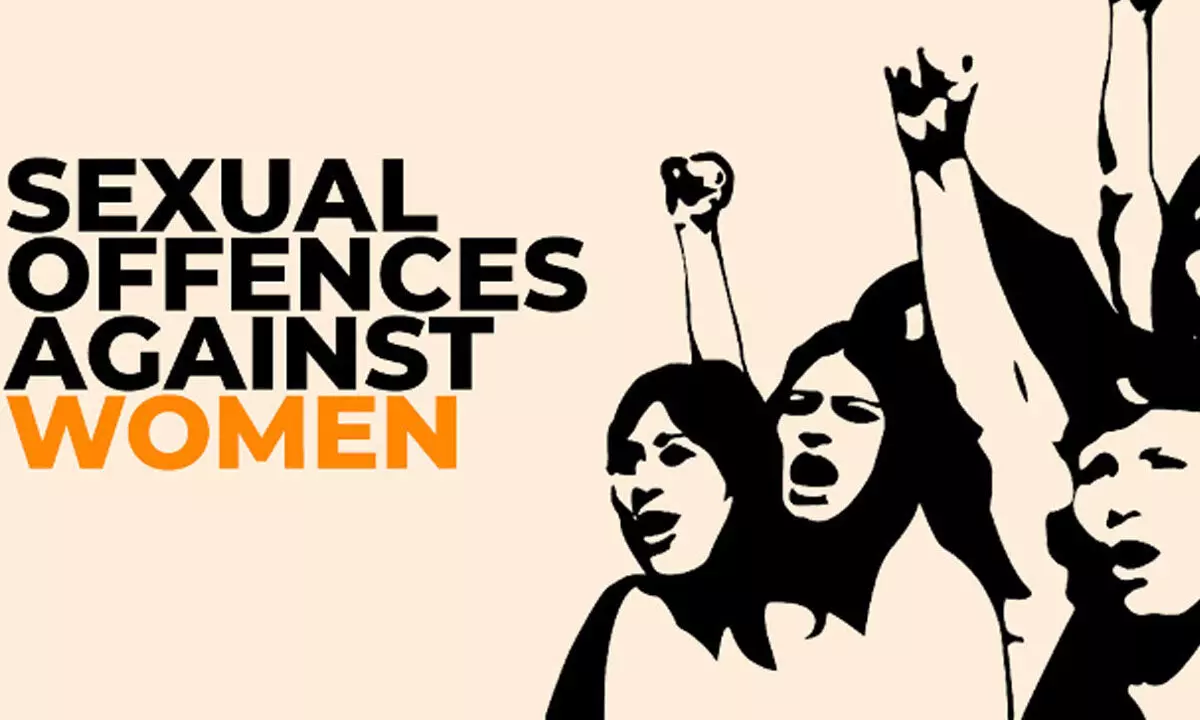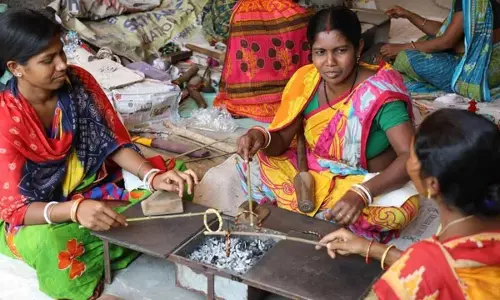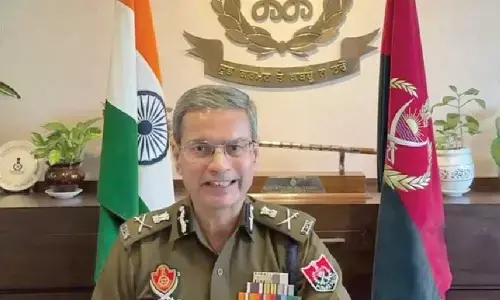Curbing crimes against women

Curbing crimes against women
First is the unfortunate lack of fear in that killer that he would be apprehended any time soon even when carrying out the gruesome violence in full public view.
The recent case of the brutal killing of a young girl in public by a ‘jilted’ boyfriend in Delhi who stabbed her with a big knife some twenty-two times and then crushed her head with a huge stone before ‘walking away’ from the spot, is a kind of violence that must produce a national response in terms of a non-political administrative and social introspection and formulation of demonstrative measures for quickly getting the country to the point of zero tolerance towards such a crime.
The case somewhere draws attention to the need to constantly strive for improving the quality of governance in a democratic set-up – an effective law & order management there must be supplemented by a required degree of social deterrence, political willingness to spend on the security of citizens and a judicial arrangement that leads to stern punishment of the perpetrator of such violence within days of his apprehension. There are three disquieting features of this crime each calling for a separate set of policy responses.
First is the unfortunate lack of fear in that killer that he would be apprehended any time soon even when carrying out the gruesome violence in full public view. Secondly, in an environment where opportunities had opened up for an easier transition from ‘poverty’ to the status of a ‘lower middle class’ even on the strength of an ordinary wage or earning as a ‘service provider,’ the youth of uncertain cultural background might be tempted to go in for the ‘pleasures’ of life such as securing the company of girls – and vice versa – just to ‘feel great’ if nothing else. And thirdly, the general decline of the social structure that saw the awareness of family responsibilities giving way to just personal concerns and interests, is another facet of the ‘advancement’ of a divergent and economically uneven society like what India had.
The lack of fear of law is the manifestation of a combination of multiple flaws of social development and governance but the principal factor is the inadequacy of police presence, police-public communication and the police image in the society. In Delhi, a police station covers a population of five to six lakh – it should have a ‘Police Out Post’ in each major locality for receiving complaints or information furnished by citizens even anonymously on suspicious activity or the presence of anti-social youth in the area.
The British law inherited by India had some useful provisions helping the police in a bona fide manner to ‘prevent’ crime at the hands of potentially unlawful elements.
These useful instruments of crime control fell into disuse because of the overbearing influence of some local politicians and the inability of the police as an institution to live up to the reputation of being a ‘friend of the law abiding’ and a ‘deterrence for the law-breakers’. However, it seems that police should consider making legitimate use of Section 110 of the CrPC to initiate preventive action against wayward elements locally known to be inclined to indulge in lawless activity.
Parents of young girls often come to know of the ‘harassment’ caused to them or an unwanted ‘friendship’ forced on them by a local ruffian but feel helpless about the same – the local police post that was expected to keep a vigil in the ‘locality’ should be the place where such a grievance could be voiced on an assurance that the police would find a way of addressing such a problem. This can happen only if policemen are sensitive to the situation of an ordinary law-abiding citizen residing in the jurisdiction – in Indian conditions, this is far from what exists on the ground but if we claim to be moving towards becoming a developed society this ‘protective’ role has to become a finer part of policing.
Likewise, a young girl moving out at late night should, for her own good, be well informed about the crime situation in that area so that at least she would take the necessary precautions for security. Girls are well advised to exercise discretion and not get into a relationship out of notions of ‘blind attraction’ without using head over heart. It is for the parents to keep communication with their growing children going so that they did not remain too much in the dark about the affairs of the latter.
Society is full of rotten elements and the head of the family – if he or she is a good manager – had to remain well-informed about what was going on regarding the interactions of family members with the world outside.
Wielding a knife and a chopper does not come naturally to every youth. These are times when police in India must strive to secure full cooperation from law-abiding citizens and establish a reputation for chasing criminals with evidence-based investigation. The flow of information to police on potential criminals, from well-intending citizens is currently non-existent and this situation has to be remedied quickly.
Police leadership must be judged for its success in establishing the autonomy of investigators pursuing cases that shook up the society for the brutality of violence inflicted on hapless girls entrapped in dubious relationships by criminally minded youth of another community.
Flawed policing weakens a democratic nation from the inside and makes the country vulnerable to hidden attacks from the external enemy. Both Pakistan and China, the two prime adversaries of India, have been conducting covert operations against this country to damage our internal security by queering the pitch for communal, regional and political harmony in the country.
The cases of public violence of the kind witnessed in the national capital must be probed also for external contacts if any, of the perpetrators of these crimes. In the final analysis, the crime scene in India is marked by a mix of offences against a person or property but what is extraordinary about it is the regular occurrence of gruesome violence traceable to personal relationships among the young folks going awry, an act of revenge or an expression of rage by a person deficient in education and cultural grooming.
This unpredictability of acts of violence committed against women often in public is becoming the hallmark of law and order and an effective remedy of this lies in the police being able to create a sense of fear of law among the local youth who were found to be wayward in their proclivities including those who went beyond their meagre earning, in search of personal aggrandisement and carnal pleasures.
The fear that India’s demographic dividend might not necessarily be turning into an asset for lack of adequate education, health and productivity, could be coming true and the strategy of policing for the social fallout of such an eventuality had to be planned and put in place.
The preventive function of exercising a close oversight on the local youth of uncertain socio-cultural profiles and questionable behaviour patterns is perhaps the most demanding of policing tasks and this can be performed only by a system of law and order management that is near perfect in terms of its treatment of the law-abiding citizens on one hand and the potential lawbreakers on the other. The ‘guardianship’ aspect of police in a democratic dispensation is as important as it is difficult to measure up to. The political executive and the Police leadership both must understand this and work together for the sake of larger national interests.
(The writer is a
former Director of the Intelligence Bureau. Views expressed are personal)



















